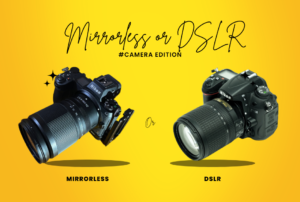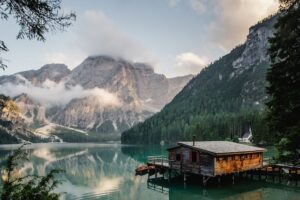Lens filters are accessories that attach to the front of a camera lens to modify or enhance the image being captured. There are many different types of lens filters, each with its own specific purpose.

Some common types of lens filters include:
- UV Lens Filters: These filters reduce haze and protect the lens from scratches and dust.
- Circular Polarizing lens filters: These filters reduce glare and reflections from non-metallic surfaces, and can also enhance color saturation.
- Neutral density (ND) filters: These filters reduce the amount of light entering the lens, allowing for slower shutter speeds and wider apertures in bright conditions.
- Graduated ND filters: These filters are used to balance the exposure between the sky and the ground in landscape photography.
- Color lens filters: These filters can add or enhance certain colors in an image.
- Infrared filters: These filters block visible light and allow only infrared light to pass through, creating surreal and otherworldly images.
1. UV (Ultraviolet) lens filters
UV (Ultraviolet) lens filters are one of the most common types of lens filters available. They are designed to block ultraviolet light from entering the camera lens and reaching the camera’s sensor or film.
While modern camera sensors are less sensitive to UV light than film, UV filters are still used for a few reasons. One of the primary reasons is to protect the lens from scratches, dust, and other potential damage. A UV filter acts as a physical barrier that can prevent the lens from getting damaged in some situations.
Another reason to use a UV filter is to reduce the amount of haze and atmospheric distortion in outdoor photos. Ultraviolet light can cause a bluish cast in images, particularly in landscapes, and using a UV filter can help to correct this.
It’s worth noting that some photographers prefer not to use UV filters, as they can sometimes introduce unwanted reflections, reduce image sharpness, or even create vignetting (darkening of the corners of an image). However, if you do choose to use a UV filter, it’s important to invest in a high-quality filter that won’t degrade image quality.
2. CPL Filter
A circular polarizing lens filter (CPL) is used to reduce glare and increase the saturation of colors in your landscape photos.
Here’s how to use a CPL filter:
Attach the filter to your lens: The CPL filter screws onto the front of your lens, just like any other filter. Make sure the filter is securely attached and rotated so that it’s straight.
Rotate the filter: Hold the CPL filter and rotate it until you see the desired effect. The filter should be rotated until the polarized light is effectively blocked and the colors appear more saturated.
Take the shot: Once you have rotated the CPL filter to the desired position, take the shot. You’ll notice an improvement in the saturation and clarity of the colors in your photo.
Experiment with different angles: The effect of the CPL filter can change depending on the angle of the sun, so it’s a good idea to experiment with rotating the filter at different angles to find the best setting for each scene.
By using a CPL lens filter, you can improve the quality of your landscape photos by reducing glare and enhancing the colors in the scene.
3. Neutral Density (ND) Lens Filter
Whether you need an ND (neutral density) filter depends on the lighting conditions and the effect you want to achieve in your landscape photos.
An ND filter is used to reduce the amount of light entering the lens, allowing you to use a longer shutter speed without overexposing the image. This can be useful for creating a sense of motion, such as the flow of water in a stream or the movement of clouds in the sky.
If you’re shooting in bright sunlight, an ND filter can help you control the exposure and prevent overexposure. Without an ND filter, you may need to use a fast shutter speed and a small aperture, which could result in a shallow depth of field and less of the scene in focus.
In short, an ND filter is not essential for landscape photography, but it can be a useful tool for achieving specific effects or for controlling the exposure in bright light conditions.
4. Graduated Neutral Density (ND) Lens Filters
Graduated Neutral Density (ND) lens filters are a type of lens filter that are used to balance the exposure between the sky and the foreground in landscape photography. These filters have a gradient or gradual transition from dark to clear, with the dark part being used to reduce the amount of light that enters the lens in the sky area of the image, while the clear part allows normal light transmission in the foreground area.
The primary purpose of Graduated ND filters is to help photographers capture more balanced and well-exposed images in situations where there is a significant difference in brightness between the sky and the foreground. Without the filter, the sky may be overexposed while the foreground is underexposed, resulting in a poorly exposed image.
Graduated ND lens filters come in different strengths, with varying degrees of darkness in the gradient area. Some filters have a soft gradient, which is ideal for subjects with a subtle transition between the sky and foreground, while others have a hard gradient, which is better for scenes with a clear, distinct horizon line.
These filters are popular among landscape photographers and can be used in combination with other filters, such as polarizing filters or regular ND filters, to achieve a desired effect or exposure. Graduated ND filters can be attached to the front of the lens, and are available in different sizes to fit various lens diameters.
5. Color Lens Filters
Color lens filters are filters that are designed to add or enhance certain colors in an image. These filters work by altering the wavelengths of light that pass through the lens, selectively blocking some colors and allowing others to pass through.
There are different types of color filters available, each with its own specific purpose. Here are some examples:
- Red lens filters: These filters block blue and green light and enhance the reds, making them ideal for capturing dramatic skies and sunsets.
- Blue lens filters: These filters block red and green light and enhance the blues, making them ideal for capturing water and sky scenes.
- Green lens filters: These filters block red and blue light and enhance the greens, making them ideal for capturing foliage and landscapes.
- Yellow lens filters: These filters block blue light and enhance the yellows, making them ideal for shooting black and white photos, as they can increase contrast and clarity.
- Orange lens filters: These filters block blue light and enhance the oranges, making them ideal for shooting portraits, as they can warm up skin tones.
- Purple lens filters: These filters enhance purples and magentas, making them ideal for capturing creative and artistic images.
Color filters can be used creatively to alter the mood and atmosphere of an image, and can be particularly useful in black and white photography. They can be attached to the front of the lens and are available in different sizes to fit various lens diameters. It’s important to note that using color filters can sometimes have an impact on the exposure of the image, so adjustments to shutter speed or aperture may be necessary.
6. Infrared (IR) Filters
Infrared (IR) lens filters are a type of lens filter that blocks visible light and only allows infrared light to pass through the lens. Infrared light has longer wavelengths than visible light and is not visible to the human eye, but can be captured by a camera sensor or film.
IR filters are often used in landscape and architectural photography to create surreal and otherworldly images with a dream-like quality. They can also be used to capture images in low light situations, as infrared light can penetrate some materials that visible light cannot.
There are different types of IR filters available, including full-spectrum filters that allow for a wider range of IR wavelengths, as well as filters that block visible light but allow some visible light to pass through, creating a unique effect.
It’s worth noting that using an IR filter can have an impact on the exposure and focus of the image, as IR light behaves differently than visible light. Some cameras may require modifications to the sensor or lens to capture infrared images effectively.
Overall, IR filters can provide a unique and creative way to capture images, and can be a fun and experimental tool for photographers interested in exploring different techniques and styles.
Lens filters come in different sizes and shapes, and can be made from various materials, including glass, resin, and plastic. They are a popular accessory among photographers and videographers, as they provide an affordable and versatile way to manipulate the image without the need for complex post-processing.
Check our artcle on Top 5 Budget Mirroless Cameras in choosing the best budget mirrorless camera.



